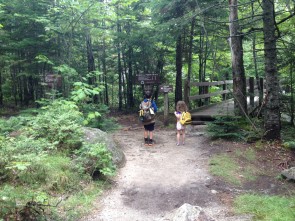I mentioned that my family has bit of a love affair with the chocolate chip cookie. You know what the smallest make or break ingredient in a chocolate chip cookie is? The vanilla. The difference in taste that a single teaspoon of vanilla makes is astounding.
But I have often heard vanilla used as a synonym for plain. In fact, Merriam Webster dictionary defines vanilla as, “lacking distinction : plain, ordinary, conventional.” And, yet, a world without the vanilla bean would be flavorless and bland.
Where does the majority of the world’s vanilla grow, you ask? In one of the least plain, ordinary, or conventional places on Earth. That’s right, my old love, Madagascar.
Madagascar boasts more than 75% of the world’s vanilla fields. All of Madagascar’s vanilla is grown in the SAVA (Sambava, Antalaha, Vohemar and Andapa) region in the country’s northeast. Vanilla is Madagascar’s largest export, which is pretty remarkable given that the plant, which was introduced from Mexico during the French colonial period, needs to be hand-pollinated.
This CBS video from 2017 discusses the recent vanilla bean shortage, a little about the price fluctuations over the past two decades, and the impact of the shortage on US businesses. What the video alludes to but doesn’t dive into, is what life is like for vanilla farmers in Madagascar now that vanilla is second only to saffron as the most expensive spice in the world.
Used to flavor so many sweet treats in the west, with the US, France, and Germany being the primary importers of its vanilla, vanilla beans in Madagascar are labor-intensive to cultivate. In a developing country like Madagascar, where the rule of law is flimsy at best, corruption is rampant, poverty is beyond most westerners’ comprehension, and cyclones can wreak havoc on a crop that takes three years to be marketable, sustainable livelihoods are elusive.
When Madagascar was a French colony, the French government set prices for vanilla producers. Madagascar gained its independence in 1960, after which the Malagasy government set the vanilla prices. During both of these periods, prices were low and predictable. In the mid-1990s, however, just about when I arrived in Madagascar, the Malagasy government de-regulated vanilla prices because of pressure from global financial institutions. This was the beginning of the dramatic vanilla bean price fluctuations that have been on-going ever since.
Increased demand and higher prices would, ostensibly, seem to be a good thing for Madagascar, one of the world’s poorest countries by GDP (the 10th poorest according to the World Atlas). Global vanilla prices were hovering at about $450 to $500 per kilogram as of August 2018, with the expectation that this year the prices would decline somewhat due to increased production. For context, this is about the same as the price for silver.
Demand pressures, however, have led to farmers harvesting beans too early to prevent theft; increased need for security at vanilla fields; and generally more dangerous conditions for vanilla farmers. Much of the vanilla profits go to middlemen, though the SAVA region has also benefited from this boom period. For vanilla farmers, it has been documented that they typically don’t know what to do with the windfall. In the context of rural Madagascar, where the closest bank is often a day’s walk along routes patrolled by armed bandits, long-term savings are not realistic. A large influx of cash in rural Madagascar turns into a liability pretty quickly.
Because of the vanilla boom, in addition to demand for rosewood, protected rainforests in the northeastern part of Madagascar, like Masoala National Park, have been illegally cut to create more vanilla fields. It makes logical sense from the perspective of the local population, the majority of whom are barely surviving on a daily basis, with absolutely no social safety nets. No one wants to miss the opportunity to become a “vanillionaire”, and the long-term implications of their actions on the island’s unique flora and fauna, like the use of its vanilla beans, are luxuries that appeal to those who live in another world. They are irrelevant to day to day survival.
Except that, in the end, it isn’t irrelevant at all.
For the long-term sustainability of the region, of the very vanilla plant that is the source of such demand, it makes no sense at all (check out this 10-minute BBC documentary to learn more, starting around minute 7:30). Other aspects of the local economy benefit from tourists interested in seeing lemurs, wild orchids, and rosewood trees in their natural habitats. Even more esoteric to the rural population, but still meaningful, is the potential for medicines cultivated from plants that grow in Madagascar’s forests, such as from the Madagascar periwinkle, which is an ingredient in leukemia treatments. These are much the same issues I observed in 1996.
Where do we go from here? Trust me, this is a question I have been asking myself for over 20 years, since I first set foot in Madagascar. There are no easy answers. Education has to be one component. Functional government is inevitably another. There aren’t short-term solutions for long-term, sustainable outcomes. For creative ideas, I like this World Bank blog that reports on initiatives happening in Madagascar, and also Madecasse’s efforts to establish bean-to-bottle production within Madagascar. As in so many aspects of life, I also think it’s a good idea to have small, specific, achievable goals that can be accomplished in the short-term, but that begin to establish the path toward a larger, long-term goal.
So, for now, the next time you buy vanilla extract or vanilla ice cream or almost any sweet treat, think about that little dab of vanilla and what a difference it makes to your taste buds, but also what an impact it has on a little country way on the other side of the world. The story of vanilla is more complex that it appears, and it is far from plain.
Pictures courtesy of Madecasse and National Geographic






















